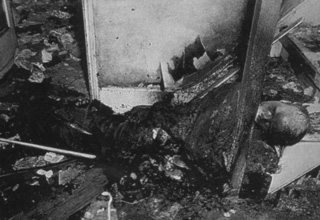When it comes to strange conditions and unexplained human ailments they don’t come much more bizarre and horrific than spontaneous human combustion. While I’m the first to recommend being more spontaneous this is certainly taking matters a little far…
Essentially spontaneous human combustion describes a number of reported cases of human beings erupting into flames for no apparent reason. There have been around 200 cases described and no one is really sure why they happen, or even whether the phenomenon is real. As is the case with all these things, many point to supernatural explanations, but what’s the real story here?
Is Spontaneous Human Combustion Real?
 With 200 reported cases, spontaneous human combustion is something that has fascinated the scientific community and the media. In 1984 a two year investigation in the process was carried out by investigators Joe Nickell and John F Fischer and published in the International Association of Arson Investigators.
With 200 reported cases, spontaneous human combustion is something that has fascinated the scientific community and the media. In 1984 a two year investigation in the process was carried out by investigators Joe Nickell and John F Fischer and published in the International Association of Arson Investigators.
During this time they assessed cases spanning the 18th, 19th and 20th century and found that in almost every case the bodies were found near ‘plausible’ catalysts for the fire which included candles, lamps, fireplaces and others. Something else they discovered was a link with inebriation – with many of the victims being drunk which may have led them to be careless around the fire. In some cases traces of the suggested fuel source could be found on the victims’ clothes. Low mobility is also a common factor that may prevent them from reacting quickly. When the damage was more destructive, it was often found that there were other potential fuel sources around such as chair stuffing and floor coverings.
The ‘Wick Effect’
The wick effect explains that a small external flame such as that found with a cigarette could cause a more extensive fire by releasing subcutaneous fat from broken skin. This could then be absorbed into clothing and thus act as a ‘wick’. Thus the combustion could continue for as long as the fuel is available. The theory has been testing on pigs (I know… ) and the results have been found to be consistent with those of SHC cases.
The Mystery Continues
One aspect of these cases often regarded as strange however is that often there is little or no damage to the surroundings. The explanation for this could simply be that fires burn ‘upward’ meaning they may have been unlikely to spread to nearby objects. Despite these findings though, Nickell and Fischer suggested that each case should be examined on its own merits, and that there may still be other factors at play. The other question is why these cases are so rare if they are caused by such mundane circumstances. Until the phenomenon can be observed under more controlled circumstances, we may never know for sure…



